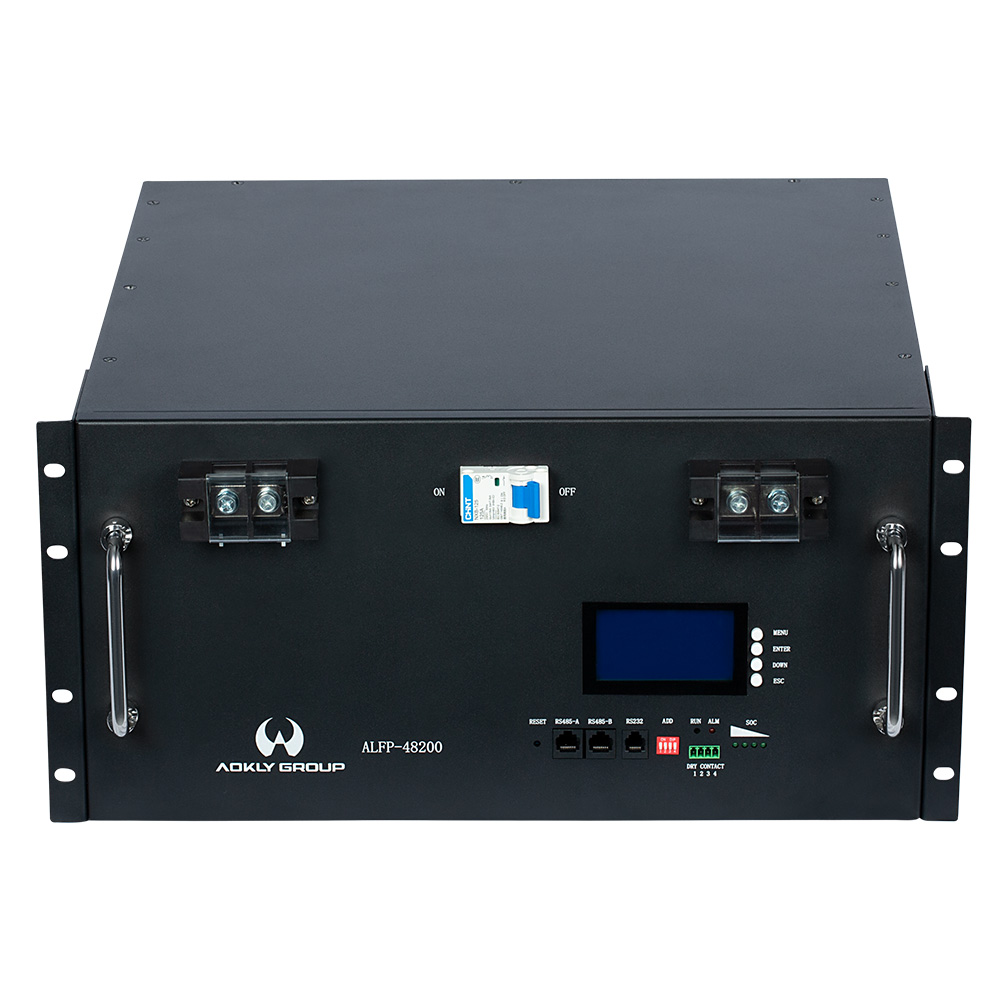Lithium-ion batteries have revolutionized the world of portable energy storage, powering everything from smartphones to electric vehicles. As a leading battery manufacturer, Aokly understands the importance of lithium-ion battery structure in delivering high-performance, reliable, and safe energy solutions. In this article, we will delve into the components of a lithium-ion battery and explain how they work together to provide efficient energy storage and delivery.
Components of a Lithium-ion Battery
A lithium-ion battery consists of four main components: the cathode, anode, electrolyte, and separator. Each component plays a crucial role in the battery's performance and longevity.
Cathode
The cathode is the positive electrode in a lithium-ion battery. It is typically made from lithium metal oxides, such as lithium cobalt oxide (LiCoO2), lithium nickel manganese cobalt oxide (NMC), or lithium iron phosphate (LiFePO4). The cathode material determines the battery's capacity, voltage, and overall performance. Professional lithium-ion battery manufacturers like Aokly carefully selects high-quality cathode materials to ensure optimal battery performance for custom battery solutions.
Anode
The anode is the negative electrode in a lithium-ion battery. Graphite is the most common anode material due to its stability, high electrical conductivity, and ability to intercalate lithium ions. During charging, lithium ions move from the cathode to the anode, where they are stored in the graphite layers. Utilizing high-grade graphite anodes to maximize the battery's energy density and cycle life.
Electrolyte
The electrolyte is a liquid or gel medium that allows lithium ions to move between the cathode and anode. It typically consists of lithium salts dissolved in organic solvents, such as ethylene carbonate and dimethyl carbonate. The electrolyte must be stable, conductive, and compatible with the cathode and anode materials. Aokly's electrolyte formulations are optimized for performance, safety, and longevity.
Separator
The separator is a porous membrane that physically separates the cathode and anode while allowing lithium ions to pass through. It prevents short circuits and ensures the safe operation of the battery. Separators are typically made from polyethylene or polypropylene. High-quality separators help to maintain battery integrity and prevent internal short circuits.

high-performance lithium-ion battery
How a Lithium-ion Battery Works
A lithium-ion battery operates through a process of charging and discharging, which involves the movement of lithium ions between the cathode and anode.
Charging Process
During charging, an external power source applies a voltage to the battery, causing lithium ions to move from the cathode to the anode. The lithium ions intercalate into the graphite layers of the anode, while electrons flow through the external circuit from the cathode to the anode. This process stores energy in the battery.
Discharging Process
When the battery is connected to a load, such as an electric motor or electronic device, the stored energy is released. Lithium ions move from the anode back to the cathode through the electrolyte, while electrons flow through the external circuit from the anode to the cathode, powering the connected device.
Advantages of Lithium-ion Battery Structure
The unique structure of lithium-ion batteries offers several advantages over other battery technologies:
High energy density: Lithium-ion batteries can store more energy in a smaller volume compared to other rechargeable batteries, making them ideal for portable applications.
Low self-discharge rate: Lithium-ion batteries have a low self-discharge rate, meaning they retain their charge for longer periods when not in use.
Long cycle life: With proper management, lithium-ion batteries can undergo hundreds to thousands of charge-discharge cycles, providing a long service life.
Conclusion
Understanding the structure and working principles of lithium-ion batteries is essential for battery manufacturers and custom solution buyers alike. By carefully selecting high-quality materials and optimizing the design of each component, Aokly delivers cutting-edge lithium-ion battery solutions that meet the diverse needs of our customers. With our expertise in lithium-ion battery technology, we are committed to providing reliable, high-performance energy storage solutions for a wide range of applications.

 EN
EN 



